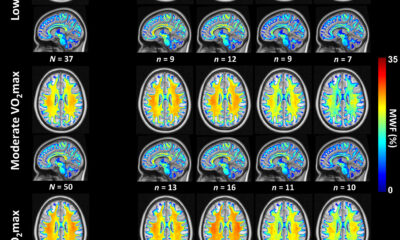Health
Starting abortions at home with medication for later pregnancies is safe and increases access, research shows

Topline
Managing the early stages of medication abortion care later in pregnancy at home is safe and reduces time spent in hospital, according to new research published on Thursday, which researchers say could increase access to the procedure as reproductive rights are a key issue in the 2024 election.
Self-managing some abortion care during later pregnancies is safe, researchers found.
Key facts
Nearly all abortions in the United States are carried out at or before the 13th week of pregnancy – the first trimester – according to the Centers for Disease Control and Prevention, and clinical guidelines typically recommend that the procedure be performed only in a clinical setting after the 12th week so that patients can remain under observation .
Medication abortions involve taking two types of pills to end the pregnancy: mifepristone, which blocks a hormone needed for the pregnancy to continue, and misoprostol, which causes the uterus to contract. For abortions, patients usually receive mifepristone in a clinic after twelve weeks and return to the hospital. a day or two later to receive misoprostol until the procedure is completed, a process that often requires an overnight stay in the hospital.
Based on a randomized control trial of 435 women who had a medical abortion between 12 and 22 weeks, published in the medical journal Lancet, researchers from universities and hospitals in Sweden found that medical abortions after 12 weeks of pregnancy were as safe and effective as misoprostol . started at home rather than in hospital and that women who provided the early stages of care at home spent less time in hospital.
Of pregnant people who started misoprostol at home and returned to the clinic to receive further doses – usually several are needed to complete the procedure – 71% spent less than nine hours in hospital, compared with 46% of those in the hospital treatment group, the peer-reviewed study showed.
There were no differences in the pain reported by patients in both groups, the type and number of side effects or the number of hospital admissions earlier than planned, the researchers said, adding that a follow-up survey found that 78% of the home group said they preferred their assigned treatment option, compared to only 49% of the hospital group.
One of the study’s authors, Johanna Rydelius, a gynecologist at Sahlgrenska University Hospital and researcher at the University of Gothenburg, said the findings offer a safe alternative to a practice that often requires overnight stays that many women “find stressful and isolating.” and could potentially lead to greater “feelings of autonomy at a time when women can feel extremely vulnerable.”
Crucial quote
“Increasing access to abortion later in pregnancy is a critical part of the fight for reproductive autonomy,” said Heidi Moseson and Caitlin Gerdts, researchers at Ibis Reproductive Health, a U.S. nonprofit reproductive health research organization , in a linked commentary piece alongside the study in the Lancet. Given the “overwhelming preference for home” administration of misoprostol among the pregnant people involved in the study, Moseson and Gerdts, who were not involved in the study, said the guidance would be reformed and that “later to a less clinical controlled model of medical abortion care would be worked towards’. during pregnancy is an important first step to improve access.
Why do current guidelines recommend facility-based medication abortions after twelve weeks?
This is due to the greater risk of complications the procedure poses in later stages of pregnancy, which may require additional care. This may include pain, bleeding, infection, or incomplete abortion (material debris). But despite “profound” implications for access, the requirement to administer medications in a clinical setting is “primarily driven by the lack of data on alternative models of care,” Moseson and Gerdts explained. This system “limits the number and type of facilities that can provide abortion care after 12 weeks,” she added, noting the limited bed space and staffing needs required to accommodate people overnight.
Important background
Since the Supreme Court overturned Roe v. Wade in 2022, many states in the US have severely restricted access to abortion. The method is now forbidden from conception in fourteen states and from six weeks — a time when many people are not even aware they are pregnant — in four states, while the future of abortion is uncertain in a handful of other states due to legal challenges. While exceptions are made in limited circumstances in states that ban abortion, they vary by state, and doctors and health experts have complained that the vague or inconsistent language outlining exceptions is out of touch with medical reality and unworkable in practice. This fits within broader efforts to reduce reproductive care even further, such as those of Republicans attempts to limit access to mifepristone. The issue has polarized the country, and both Democrats and Republicans have seized on reproductive health care as a key divisive issue for the upcoming presidential election.
Big number
625,978. That’s the number of legally induced abortions in the US in 2021. according to to the CDC, with the exception of California, Maryland, New Hampshire and New Jersey, which did not provide data to the agency. Nearly all of these cases, 93.5%, occurred at or before 13 weeks.
Receive text alerts from Forbes Breaking News: We’re launching text alerts so you’re always up to date on the top stories driving the day’s headlines. Text “Alerts” to (201) 335-0739 or Log In here.













